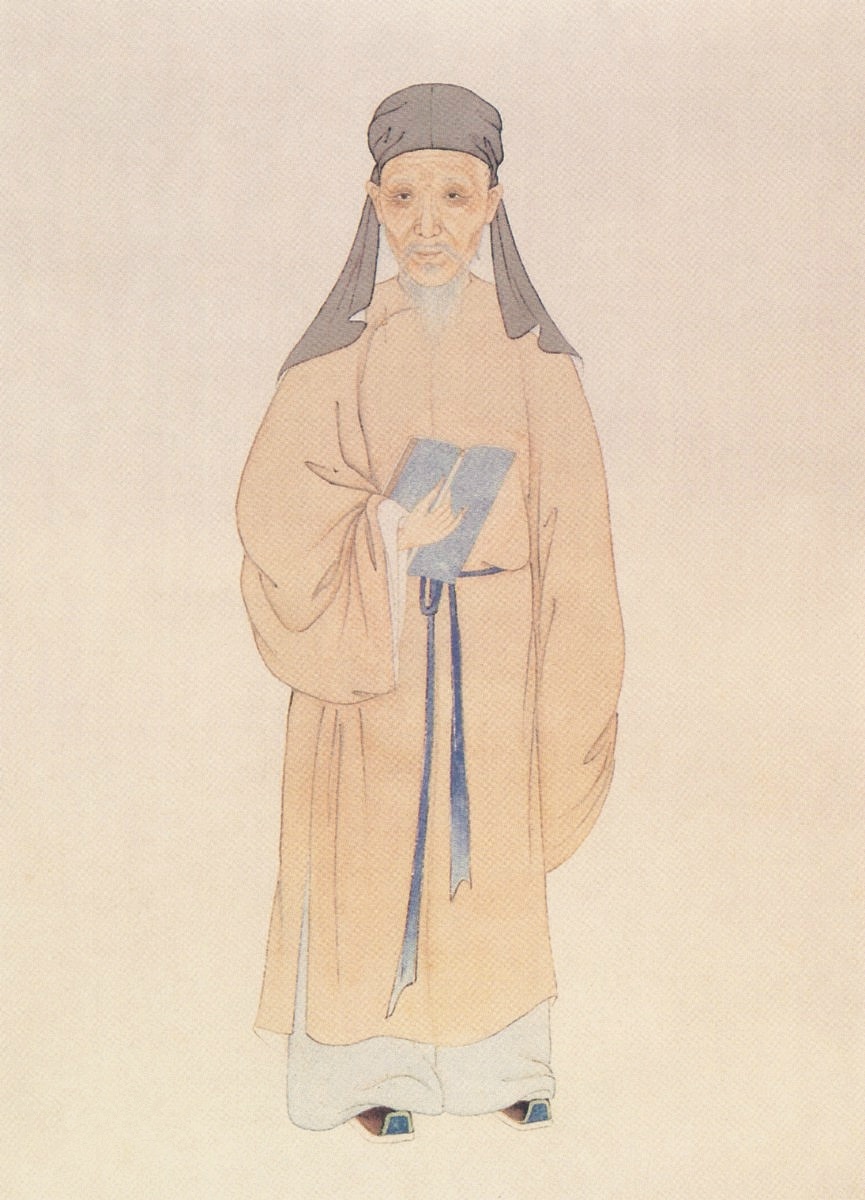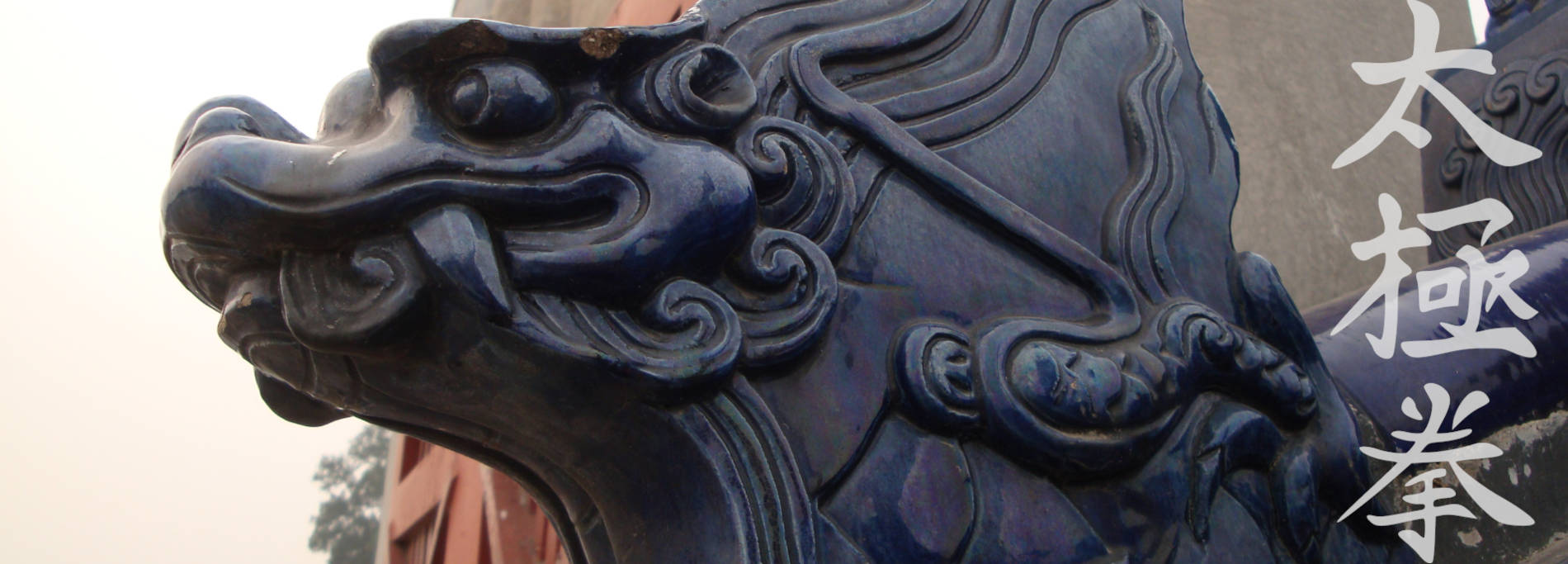Internal and external martial arts
The Chinese martial arts are often differentiated into a so-called "internal school" and an "external school". Taijiquan is associated with the "internal school". I would like to share a couple of thoughts here on the issue.
History in a nutshell - the internal school
If you are not interested in history then you can skip this part.
Huang Zongxi (1610 - 1695) - one of the "most important intellectual figures of the early Qing", historian, philosopher, poet and author (from Mote, 1999) - was (just like Chen Taijiquan founder Chen Wangting) a Ming dynasty loyalist.
Huang Zongxi fought for the "Southern Ming" until 1649, who resisted the Qing dynasty for a few years after the fall of the North. After 1649 he lived in seclusion in his homeland of Yuyao in the north of the province Zhejiang, but he no longer actively participated in the military or political resistance. After the fall of the Ming, Huang Zongxi carefully analyzed the errors in the political system that led to the overthrow of the Ming (Dillon, 1998).
 |
 This work is licensed under a Creative Commons Attribution-ShareAlike 3.0 Unported License. |
In 1669, at the request of a certain Gao Chensi, he wrote an epitaph for the martial artist Wang Zhengnan (1617-1669), who allegedley practised the "internal school". Gao Chensi probably provided the necessary information. The inscription is an interesting testimony. Huang Zongxi's youngest son Huang Baijia (1643-1709) was apparently a student of Wang Zhengnan and wrote the treatise "Boxing Method of the Internal School" (neijia quanfa) in 1676, in which he describes the techniques of the internal school. They are actually quite straight forward and not really any different from other techniques. He writes:
"In the external school the Shaolin art is the most perfected of all. Zhang Sanfeng was skillful in Shaolin [boxing], but he turned it around and created what is called the internal school. To know it a bit is enough to beat Shaolin."
Huang Zongxi also writes in the epitaph that the internal school originated form Zhang Sanfeng:
"Shaolin is widely praised for its boxing, but it is emphasized hitting techniques, against which advantages can be gained. There is a so-called internal school that uses stillness to control movement, thus an attacker can be brought down at the very start of an encounter. Therefore we differentiate Shaolin as an external school. The internal school was founded by Zhang Sanfeng during the Song Period. Sanfeng was an Alchemist from Mount Wudang."
It is pretty clear in the whole context that Huang's epitaph was not meant as an accurate historical account. Also he doesn't hide his antipathy for the new Qing government, using the internal and external dichotomy also as a means to drive home his liking for the Ming dynasty (considered to be the last real 'Chinese' dynasty in contrast to the 'foreign' Qing dynasty). The internal school was mentioned a couple of times in small articles in gazeteers in the following centuries but it wasn't really until much later that the internal school gained momentum. But even in the early 20th century many people saw the divide as negligible:
“Boxing is divided into two schools, internal and external, however, more people are familiar with the external school. No matter if it is about the internal or the external school, you have to use the individual techniques of falling, lifting, opening and closing, of beginning and ending with perfection, one has to regulate the qi and understand the principles and be inspired when doing the forms. [...] In addition, the lower body is most important. It is the basis of the whole body. Whatever happens, if it is not stable, one can't respond properly to a capable opponent" (Xu Ke, 1916).
From 1894 onwards some masters of Xingyiquan, Baguazhang and Taijiquan began to associate themselves with the internal martial arts. Sun Lutang, a disciple of one of these masters, started in 1915 to publish a number of very influential books. Some time afterwards this classification became the official standard.
In 1928 the Chinese government created a central martial arts academy in Nanjing - still the nationalists were in power at that time. The academy was divided into two sections, in a Wudang section consisting of Xingyiquan, Baguazhang and Taijiquan, and in a Shaolin department where all other martial arts were taught. There was a lot of political division between these departments.
What is internal and what external in real-life practice?
As a trainer I am often being asked questions about the internal and external martial arts. I find the discussion a bit problematic and I don't want to strengthen the old divide between so-called internal and external martial arts. There has been a lot of nonsense and also vilification going on in the past 100 years or so. I personally think it is better to ask yourself if you are learning a coherent system rather than if internal is better than external or vice versa.
In the Chen Taijiquan I have learned and how I teach it there are internal methods as well as external methods. To classify the whole art as only internal or only external thus seems a bit off. I think it is a much better perspective to discuss the repective methods which are inside a martial art. For example, we have stance training, stepping methods, long pole shaking, short stick training and so on. It would probably make sense to classify those as external methods as they are basically happening on the outside of the body and can be clearly seen. Then we have breathing methods, work on internal pathways of force generation, proprioception, kinesthetics, mind and intention work and so on. Many terms and concepts, like internal force (neijin), internal energy (neiqi), internal pathways (jinlu), intention work (yigong) and so on refer directly to this kind of training. A lot of this cannot really be seen from the outside but only guessed from a certain "cohesiveness" of the movements, so it makes sense to classify all this stuff as internal methodology.
If we use this classification (internal/external method rather than internal/external art) we can see that certain martial arts use more internal methods and others more external ones. Still there will always be some kind of mix of internal and external. We should try to balance these methods in a coherent way, building skills in both realms and finally unifying them to reach one higher goal. In our Chen Taijiquan, for example, we teach some internal methods right from the start and they can be found all over the form, they are basically inseparable from it. But they become more important in later stages of our practice. In the beginning the external shapes are actually more important to develop skill, in a muscular kind of way as well as in terms of mobility. There should be a certain development in the art while we progress and some methods are more important when we start our training and some become more important later.
We have a saying which goes "internal and external unite" 内外合一. This is the way to go in our system - not either internal, or external, but both in a coherent and useful way and in a good balance.
Literature
Dillon, M. (1998). China. Richmond: Curzon.
Henning, S. E. (1997). Chinese Boxing: The Internal Versus External Schools In the Light of History and Theory. Journal of Asian martial arts , 6(3), 10-19.
Huang Baijia (1676). Biography of Wang Zhengnan. (Online: Brennan Translation)
Mote, F. W. (1999). Imperial China, 900-1800. Cambridge, Mass: Harvard University Press.
Wile, D. (1999). T'ai-chi's ancestors: the making of an internal martial art. New York: Sweet Chi; Enfield: Airlift [distributor].
Xu Ke. (1916). Qing bai lei chao (digital version).

